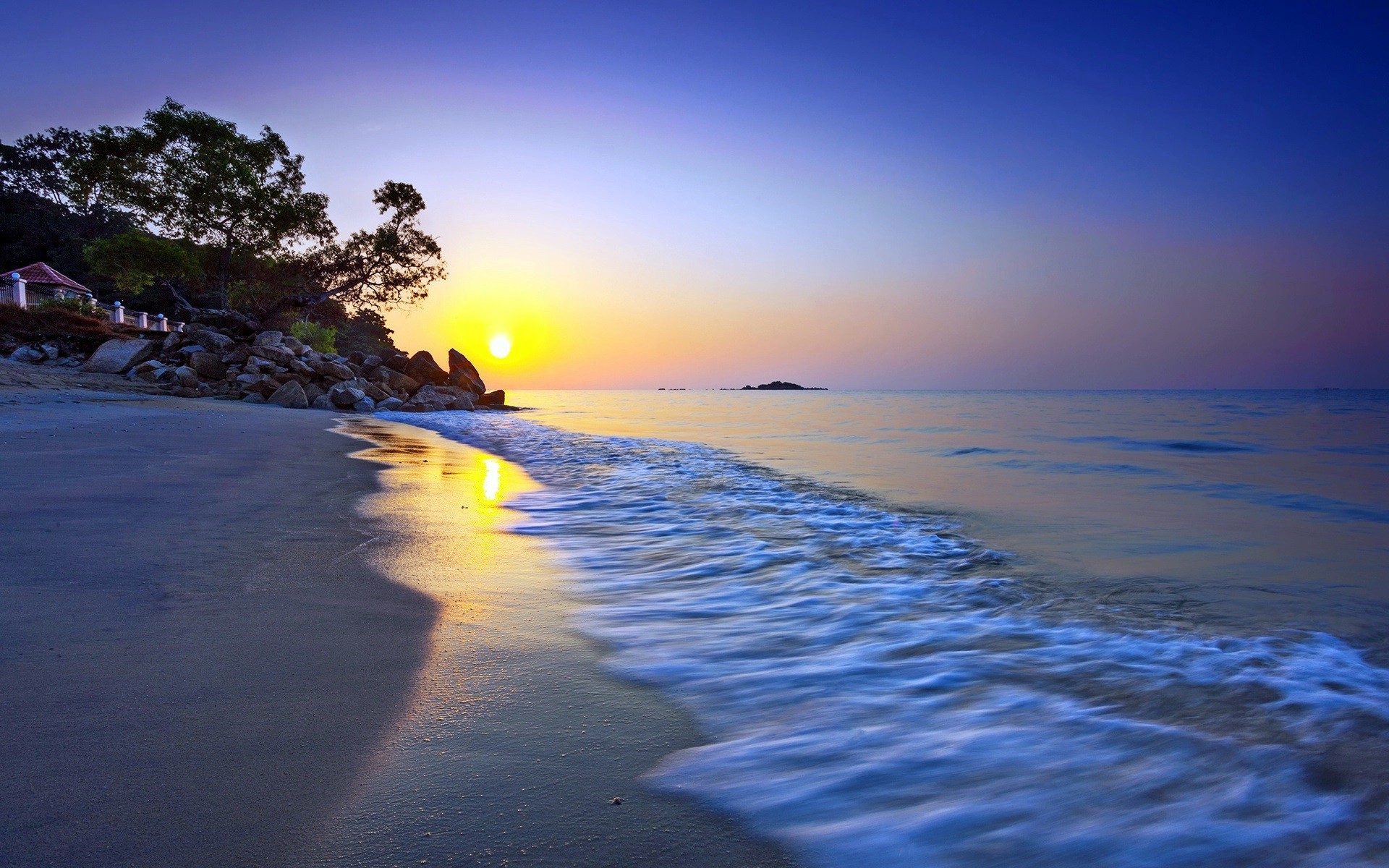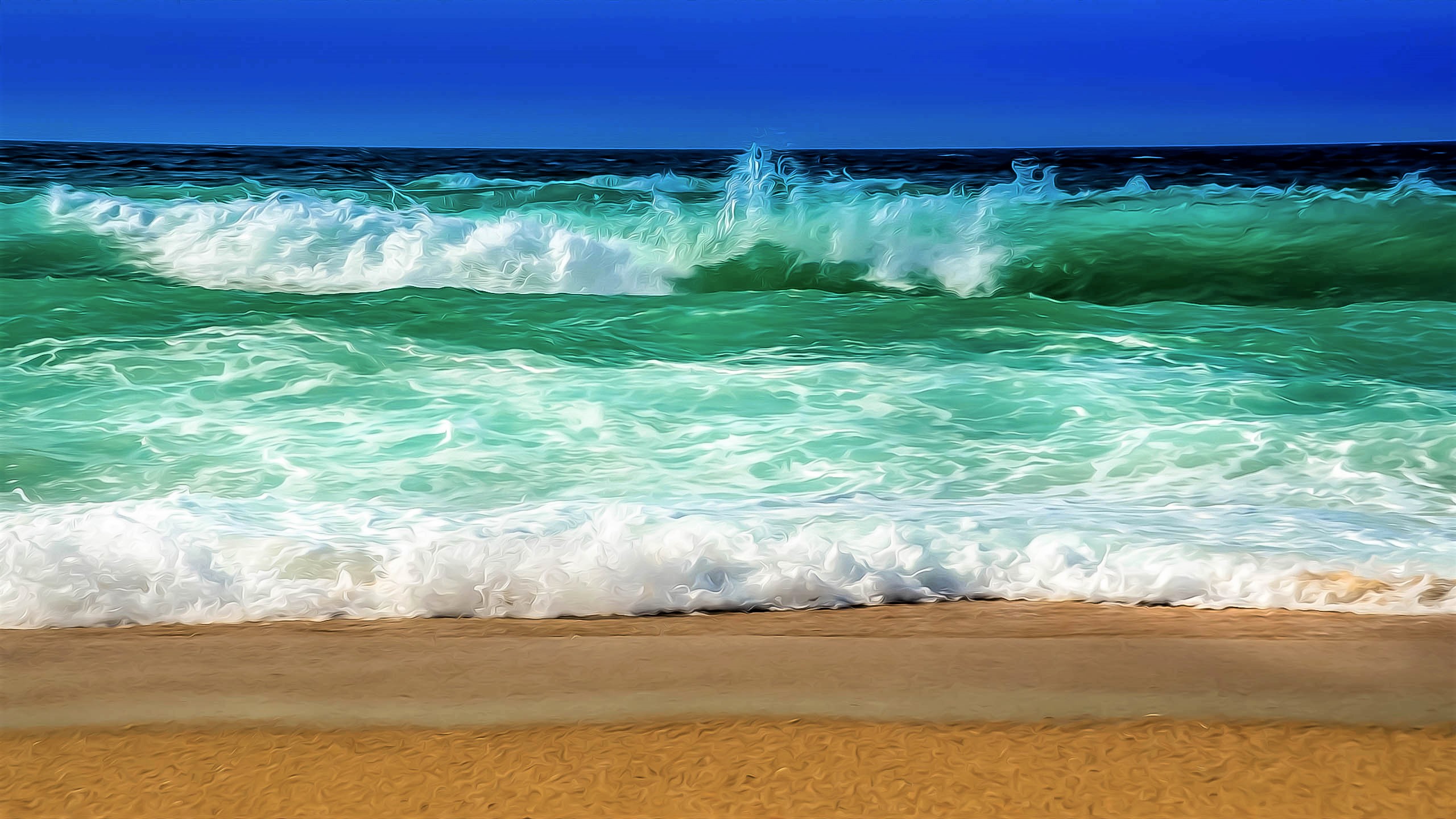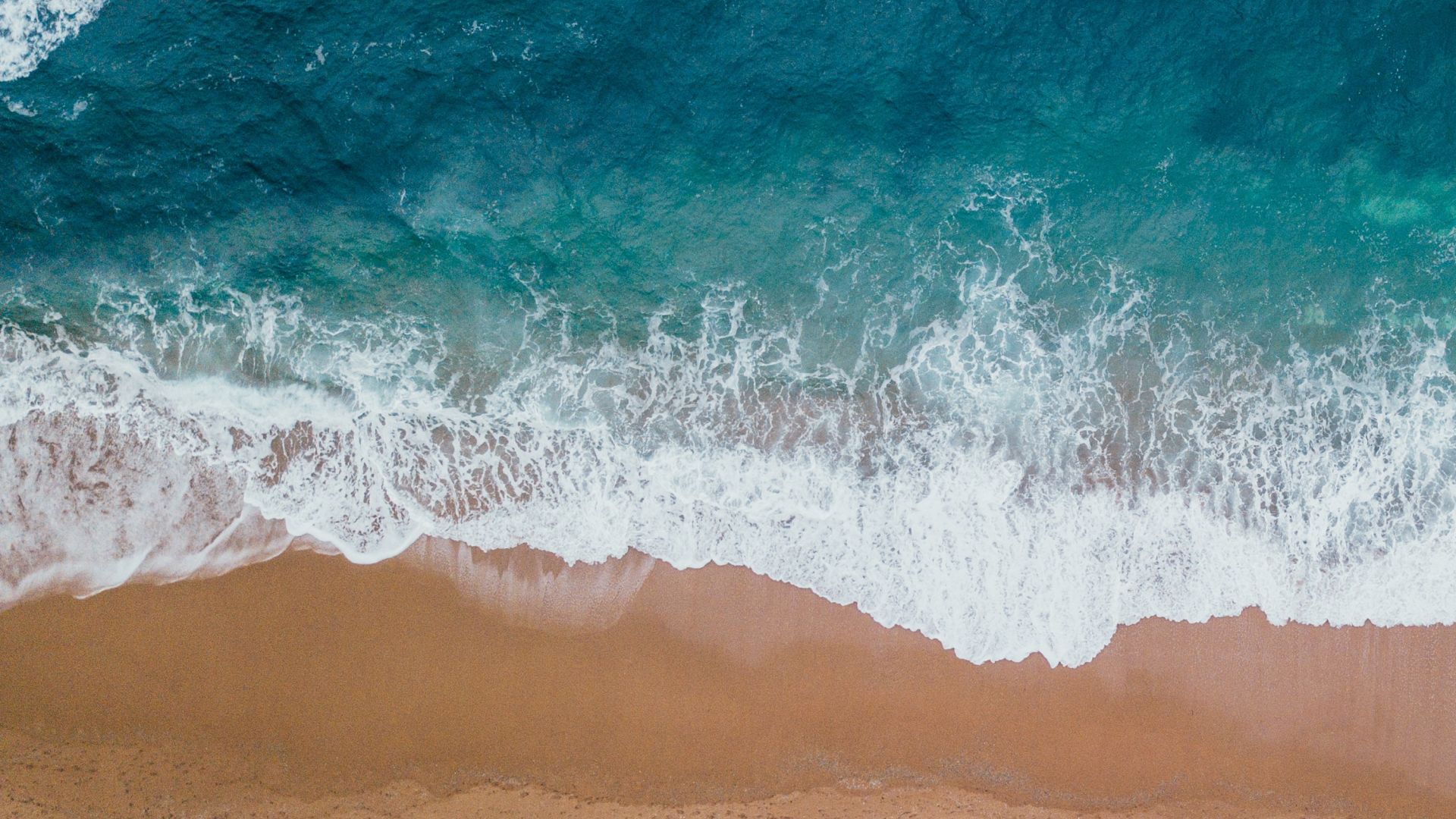
You can observe this by sloshing around in your bathtub (or, if youre less adventurous try walking with coffee). A special type of standing wave is a seiche. These are common in coastal areas where waves reflect off seawalls, ships hulls, or breakwaters. Standing waves result when two equal waves are going in opposite direction and in this case you get the usual up/down motion of the water surface but the waves dont progress. There are lots of different wave groups coming in, and theyre interfering with each other in different ways. This is why waves at the beach are all different sizes. This is called constructive interference. If two waves line up crest to crest or trough to trough, they add up. If a crest from one wave happens to line up with the trough of another, they cancel each other out. What does happen, though is that waves can either add up or cancel each other out as they pass through one another. Likewise you can see two objects at the same time. One set of sound waves doesnt garble the other.
#Beach ocean waves tv#
When two people talk or your child has both the TV and the stereo on, you can hear both. This is obvious if you consider light and sound waves. When two groups of waves meet, they pass right through each other.

One waves motion is completely independent of any other wave motion. Shallow water waves-waves that are in water that is shallower than 1/20 their wavelength (the important difference on these last two is whether or not the sea floor influences the motion of the wave) Wave speed-the velocity with which waves travelĭeep water waves-waves that are in water that is deeper than half their wavelength Period-the time it takes for one complete wavelength to pass a stationary point Wave steepness-the ratio of height to lengthĪmplitude-the maximum vertical displacement of the sea surface from still water level Wavelength-the horizontal distance between any one point on one wave and the corresponding point on the next Wave height-the vertical distance between the top of one wave crest and the bottom of the next trough The following list refers to the figure below: So we can talk about waves, its important that you know some of their parts.

The gravitational pull of the sun and moon on the earth causes the tides which are actually tidal waves. These waves are typically tens to hundreds of kilometers long. Waves caused by underwater disturbances such as earthquakes, landslides, or volcanic eruptions are called tsunamis. This sort of motion is set up anytime two fluids rub together, and remember that the atmosphere is essentially fluid. The most familiar ocean waves are caused by the wind. If theyre not stopped by anything, waves can travel across entire ocean basins and so the waves at your beach might be from a storm half a world away. There are waves of all sizes and shapes rolling into the beach at any given time.

(You might drift up the beach .well get to that.) This orbital motion is explained in the figure below: This may surprise you, but if you think about it, once you are past the breakers on your raft, you pretty much just bob up and down. Ocean waves transport energy over vast distances, although the water itself does not move, except up and down. All waves work similarly, so although we are talking about ocean waves here, the same information would apply to any other waves you might discuss in science classes. Waves are among the most familiar features in the ocean. Oceans in Motion: Waves and Tides Oceans in Motion: Waves and Tides


 0 kommentar(er)
0 kommentar(er)
